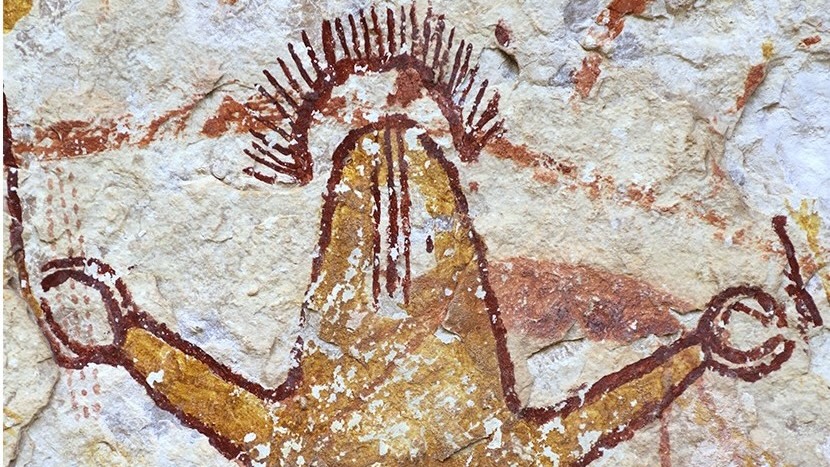Severed bow of US warship blown off by Japanese torpedo finally found in South Pacific
More than 180 lives were lost in the WWII attack, but the U.S. ship stayed afloat.
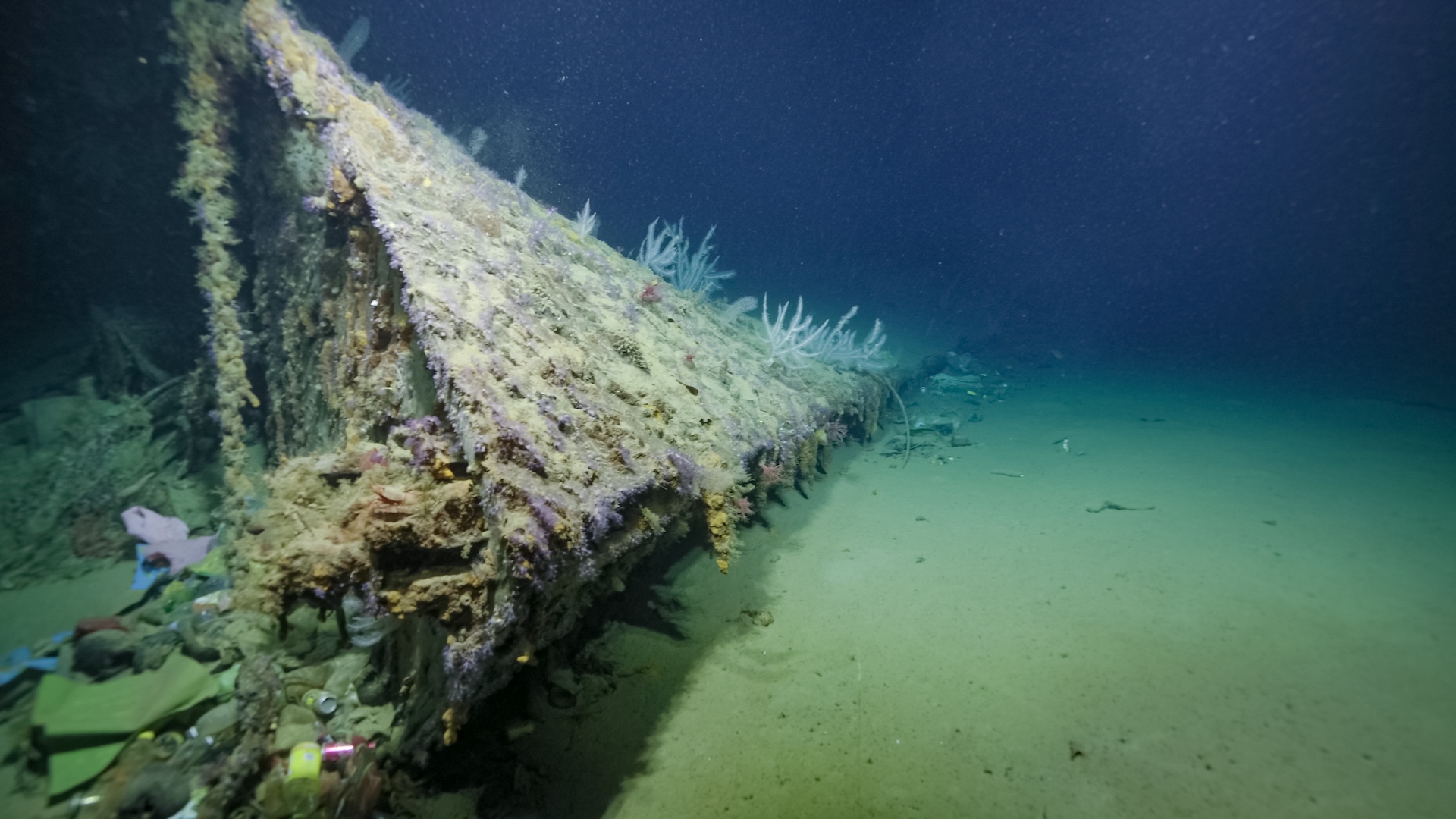
The bow section of the U.S. warship USS New Orleans, which was blown off by a Japanese torpedo in 1942, has been located near the island of Guadalcanal in the South Pacific Ocean.
Although the ship survived the attack, more than 180 of the crew onboard the heavy cruiser were killed when one of the ship's magazines of ammunition was hit by a torpedo and detonated, tearing off the entire front of the vessel.
According to a statement, the ship's bow section was discovered during seafloor mapping operations at Iron Bottom Sound, near Guadalcanal in the Solomon Islands, at a depth of 2,214 feet (675 meters).
"By all rights, this ship should have sunk," the director of the Naval History and Heritage Command, retired Rear Adm. Samuel Cox, said in the statement. "But due to the heroic damage control efforts of her crew, USS New Orleans became one of the most grievously damaged U.S. cruisers in WWII to actually survive."
The New Orleans was hit during the Battle of Tassafaronga near Guadalcanal on the night of Nov. 30, 1942, when U.S. warships attempted to intercept Japanese destroyers delivering supplies to the island.
The naval battle took place several months after the successful landing of U.S. marines and soldiers at Guadalcanal — a major Japanese military base which was eventually captured in February 1943.
Related: 30 incredible sunken wrecks from WWI and WWII
Get the world’s most fascinating discoveries delivered straight to your inbox.
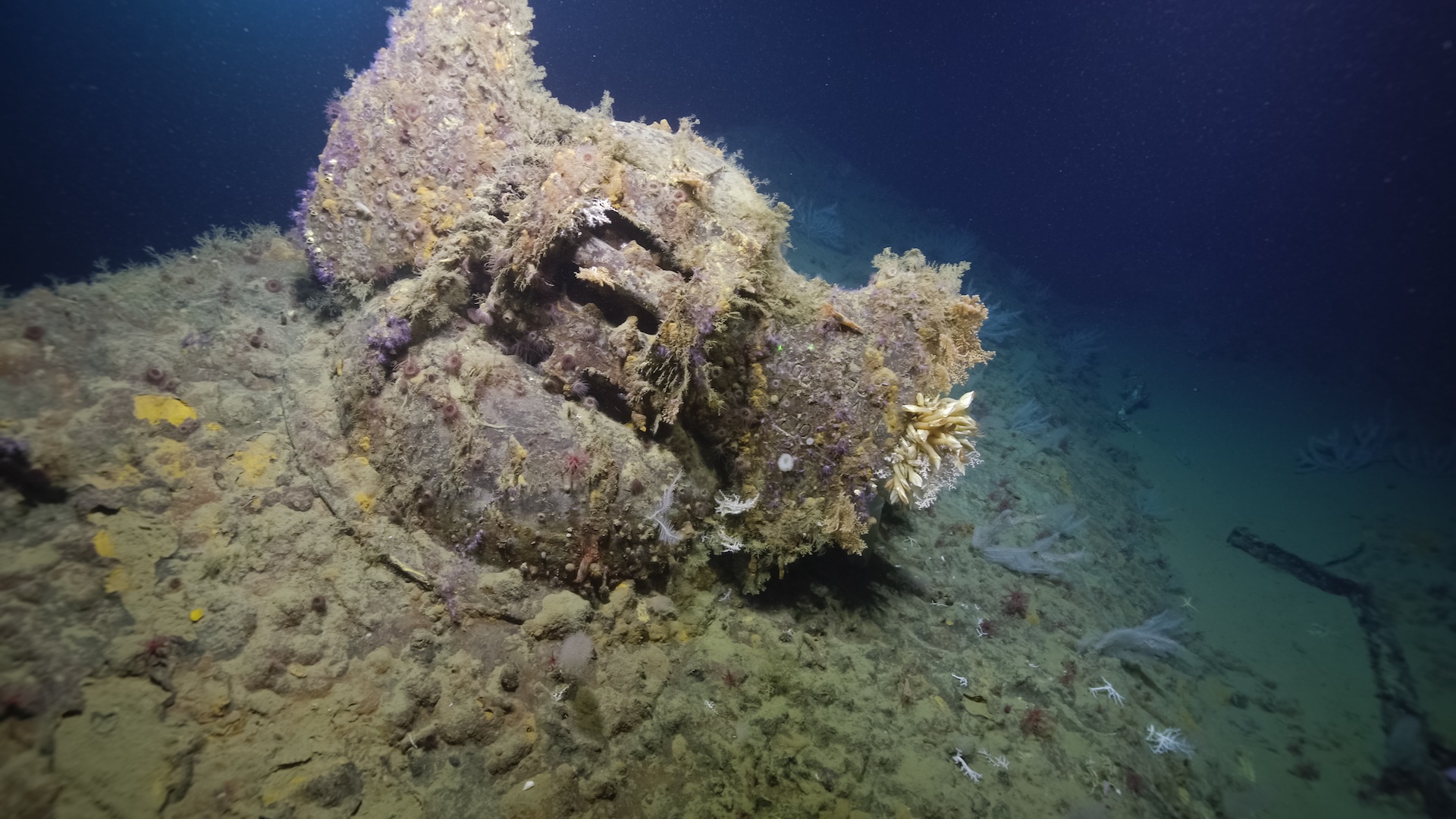
Stamps visible on the ship's anchor and its structure helped confirm the identity of USS New Orleans' bow section.
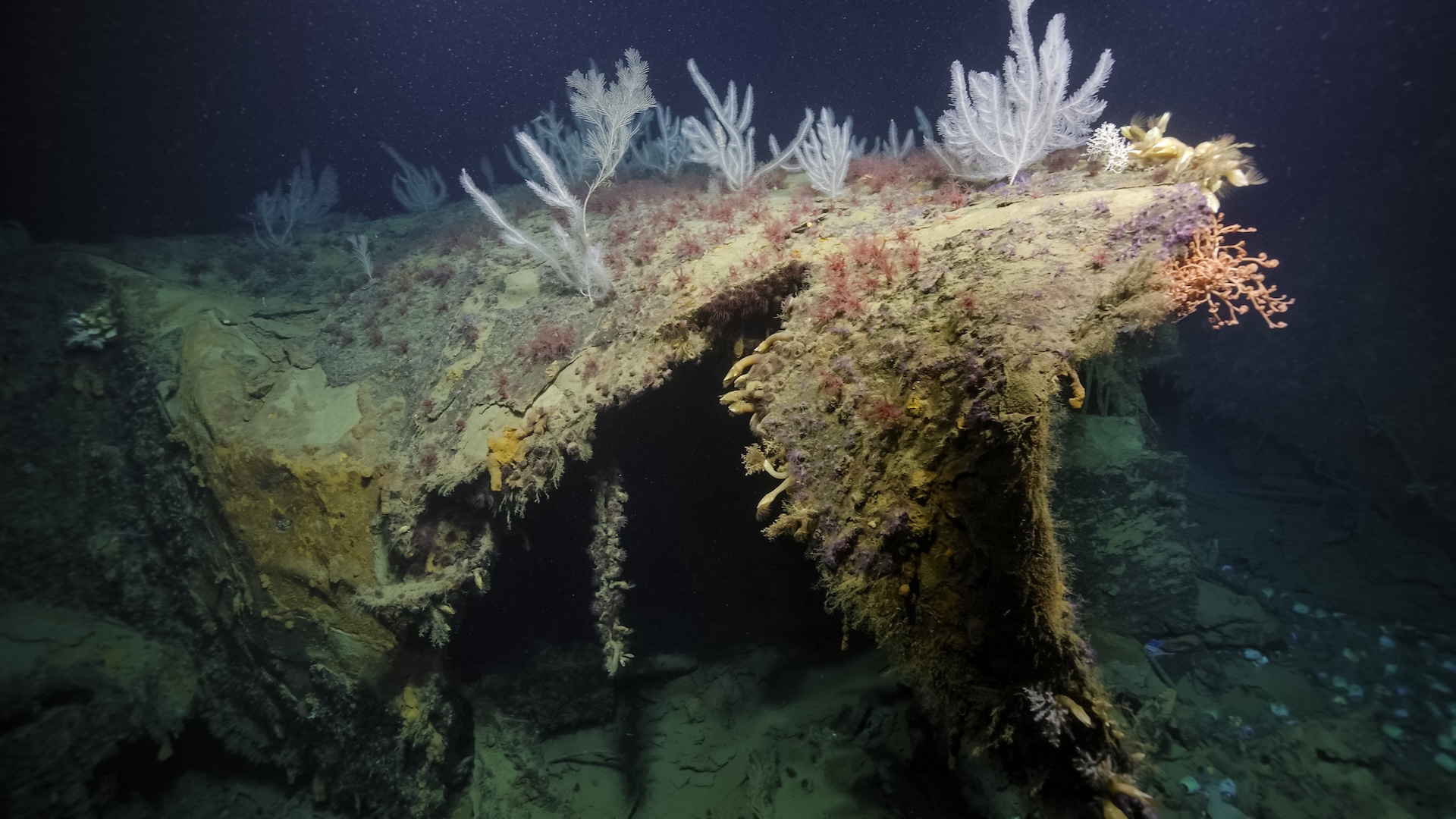
The wreckage is now home to deep-sea corals, anemones, and basket stars that use the sunken bow section as their habitat.
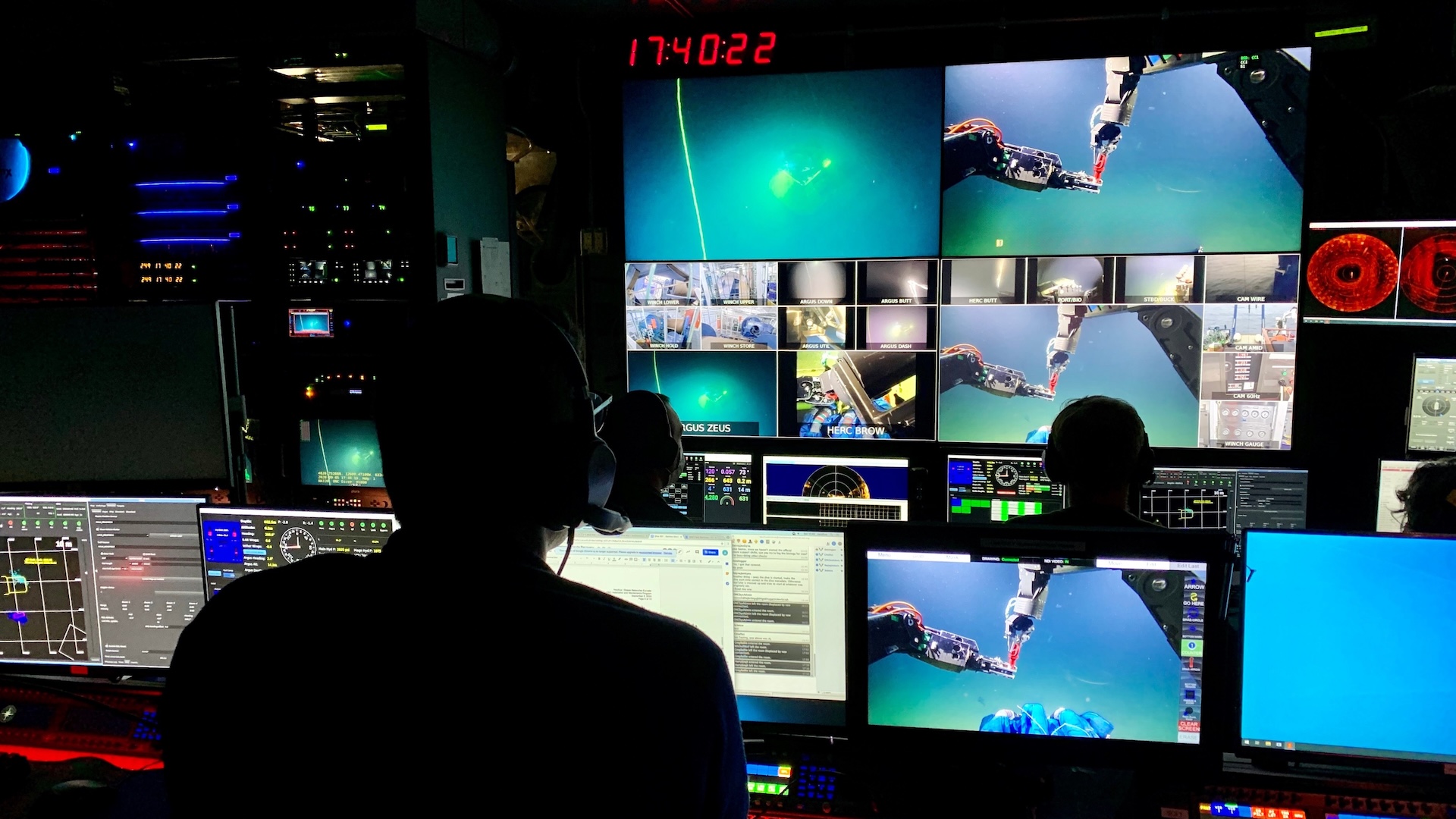
The researchers located the wreckage during seafloor mapping with remote-controlled vehicles from the OET exploration ship Nautilus.
War wreckage
The bow wreckage was found by the University of New Hampshire's uncrewed surface vessel (USV) DriX, which was mapping the seafloor with sonar equipment, using reflected sound pulses to estimate distances.
The USV was being controlled by researchers aboard the Exploration Vessel Nautilus, which is owned and operated by a U.S. nonprofit called the Ocean Exploration Trust (OET). The expedition was supported by the National Oceanic and Atmospheric Administration (NOAA).
One of the search leaders, OET chief scientist Daniel Wagner, said in the statement that a remotely operated underwater vehicle (ROV) was sent to explore the wreckage after its discovery by DriX; and that hundreds of experts around the world had worked to make a positive identification.
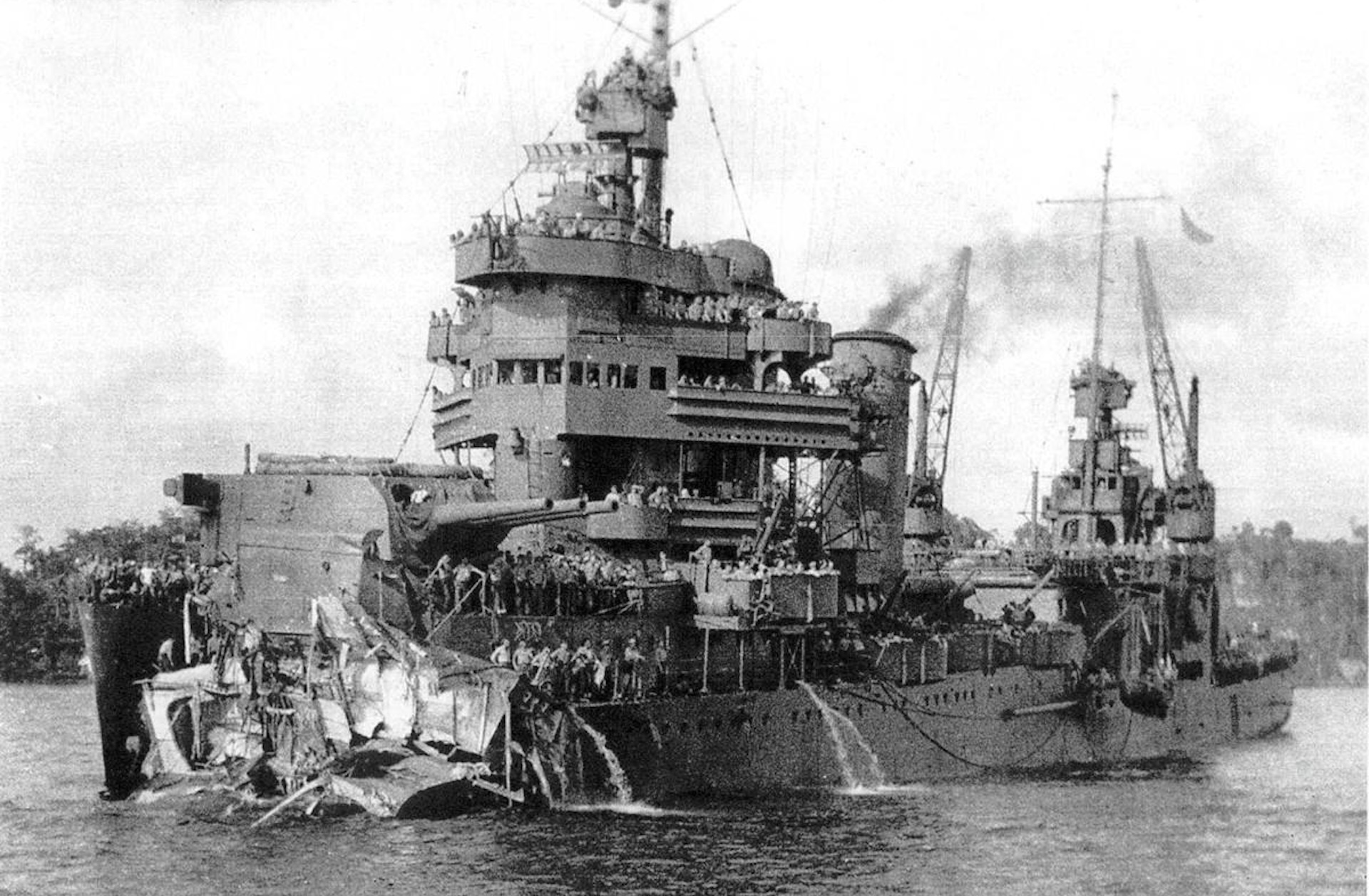
After the explosion tore off its bow, the New Orleans began flooding; but the vessel was kept afloat by crew members who stayed at their posts, although some lost their lives and three Navy Crosses were awarded posthumously.
The ship was temporarily repaired with a coconut log in a nearby harbor until it was able to sail back slowly to the United States for permanent repairs.
"To find the bow of this ship is an opportunity to remember the sacrifice of this valiant crew, even on one of the worst nights in U.S. Navy history," Cox said.
Tom Metcalfe is a freelance journalist and regular Live Science contributor who is based in London in the United Kingdom. Tom writes mainly about science, space, archaeology, the Earth and the oceans. He has also written for the BBC, NBC News, National Geographic, Scientific American, Air & Space, and many others.
You must confirm your public display name before commenting
Please logout and then login again, you will then be prompted to enter your display name.

